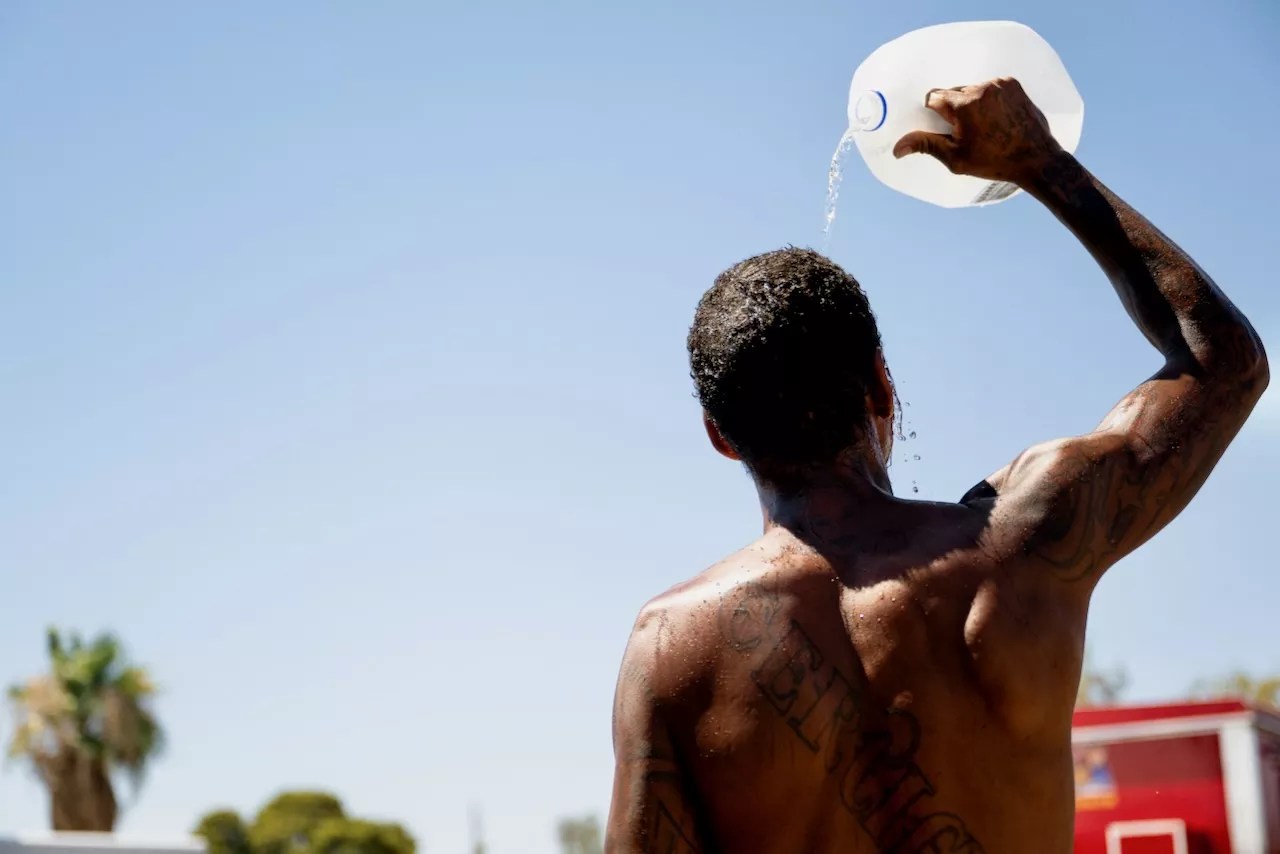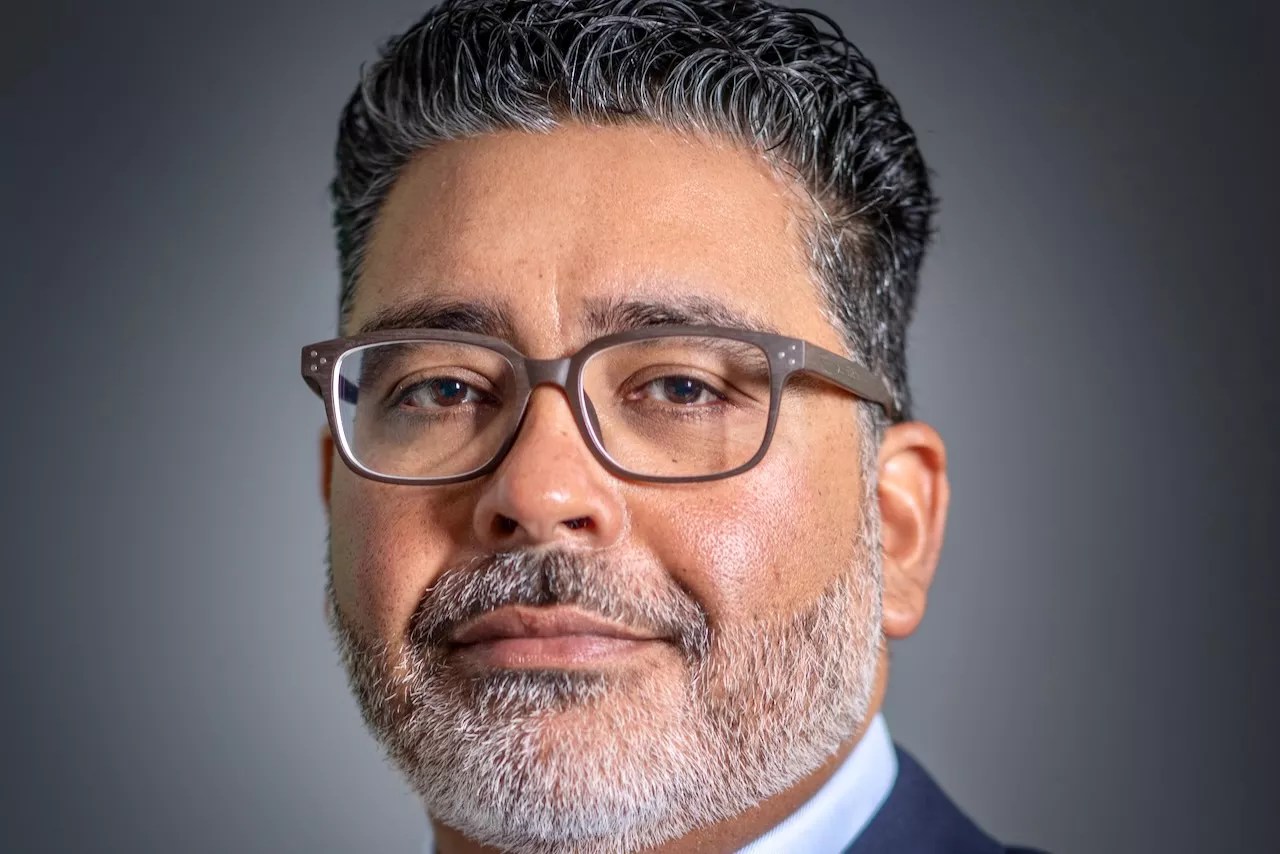
Brandon Bell / Getty Images

Audio By Carbonatix
A record number of people died in 2023 from the Valley’s increasingly scorching heat, according to a preliminary report released Wednesday by the Maricopa County Department of Public Health.
The public health agency confirmed a total of 645 heat-related deaths in 2023 – a 52% increase over the 425 people who died from the heat in 2022. The massive increase is a staggering, deeply concerning figure that illustrates how the Valley’s heat crisis is escalating.
Of the heat-related deaths in 2023, according to the report, 45% were among people experiencing homelessness, more than 75% of the deaths were male, and 71% of heat-related deaths took place on a day with an excessive heat warning. Almost two out of three of the deaths were people older than age 50.
“This tragic number shows us how much work we still have to do,” Rebecca Sunenshine, the health department’s medical director, said in a press release. “With a coordinated countywide strategy, nearly every one of these deaths can be prevented.”
In 2023, Arizona experienced 73 days with temperatures above 100 degrees and broke a record when, for 31 days in a row, temperatures reached higher than 110.
In October, the health agency confirmed 331 heat deaths and said it was investigating another 273 possible cases at the time. The county’s enhanced heat surveillance season usually begins in May and ends in October.
Also Wednesday, the agency released a report detailing the results of a cooling center evaluation that it said will inform heat relief efforts this year. The report found that people often didn’t know cooling centers existed or had difficulty getting transportation to them, and that there was demand for the centers between 9 a.m. and 7 p.m. every day.
The agency said it’s working to expand hours and days of operation, create signs for all heat relief locations in the county and develop a bilingual heat relief call center to answer calls and connect people to resources and transportation to and from cooling centers.
Sunenshine told Phoenix New Times the agency will use funding from the American Rescue Plan Act of 2021 to increase hours for relief centers during the coming heat season. However, once that money runs out, the county will need to find long-term funding for cooling centers, she said.
“We have not yet identified a sustainable way to fund these activities in future heat seasons,” Sunenshine said. “It’s a very big priority. Unfortunately, there just aren’t a lot of grants out there for health departments to apply for heat relief.”
Still, the cooling centers won’t solve the crisis. Sunenshine acknowledged other long-term solutions are needed to keep people from dying in Arizona’s killer heat as the number of people experiencing homelessness in the Valley has been growing.
“With rising temperatures, it’s all the more important that we address our housing issue because people that don’t have shelter during extreme heat are actually at 500 times the risk of dying from heat as people who do have shelter,” Sunenshine said.

Eugene Livar
Arizona Department of Health Services
Hobbs appoints Arizona’s first chief heat officer
On March 1, Gov. Katie Hobbs announced the creation of what she called the nation’s first chief heat officer. Five days later, the Arizona Department of Health Services named Dr. Eugene Livar to the position as part of its new extreme heat preparedness plan.
“I’m excited to take on this role and this important work to make sure Arizona is prepared as possible for this upcoming heat season and beyond,” Livar said in a press release.
Livar will oversee the plan’s implementation, which requires maintaining partnerships between state, city and county governments as well as communities, local organizations and other private sector stakeholders. He has been working on heat preparedness plans with the Arizona Department of Health Services since 2012.
Hobbs’ plan also details the administration’s efforts to expand access to cooling centers, including the introduction of six solar-powered mobile cooling units across the Valley.
The city of Phoenix also is looking to expand its response to extreme heat with its 2024 Heat Response Plan, which it presented to the city council on Feb. 27. The city plans to open two overnight heat relief centers and expand hours at three libraries to allow people to cool off later in the day, according to the Arizona Republic. The city also created a multi-agency Executive Heat Response Leadership team that includes officials from public safety agencies and city departments.
Some councilmembers raised concerns about the cooling centers becoming a “nuisance” to nearby residents.
“We need to ensure we take steps so it does not become – I don’t want to use the word, but I’m going to use the word – a nuisance to the community in which it falls,” Councilmember Kesha Hodge Washington said, according to the Republic.
Councilmembers Laura Pastor, Ann O’Brien and Jim Waring also spoke out about unsheltered people and those with substance abuse issues overwhelming the cooling centers – despite nearly 75% of the heat deaths in 2023 taking place outdoors and 45% of the victims being unhoused people, according to the county report.